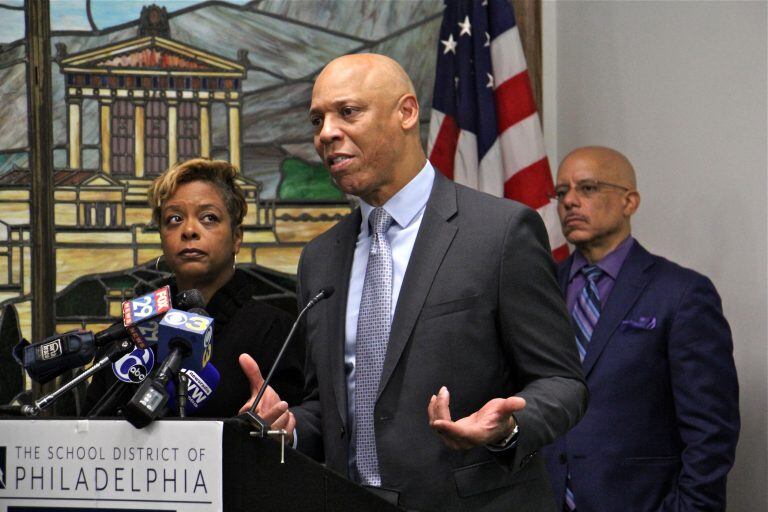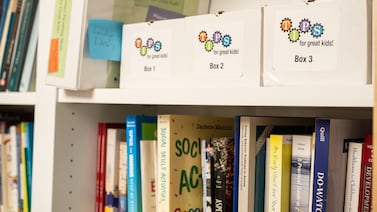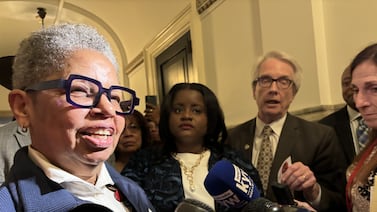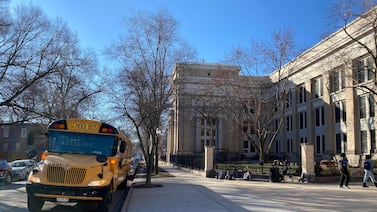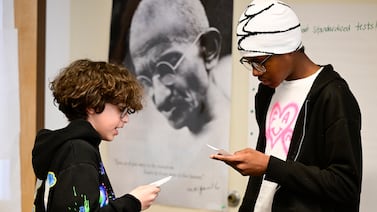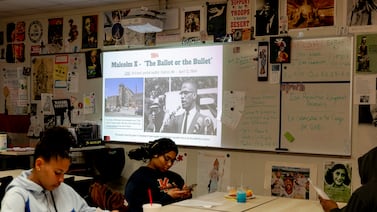Despite a surge in cases of coronavirus, Philadelphia’s health commissioner, Dr. Thomas Farley, and Superintendent William Hite said on Thursday they believe it’s safe to reopen school buildings to some students later this month.
Teachers will return Nov. 16, a week later than originally planned because of the small number of students who have said they will return in person.
The school district has said students in pre-kindergarten to second grade can return to school buildings Nov. 30 for a hybrid model, which would include two to three days a week of instruction.
But only 10,000 students have signed up. That’s less than one-third of the 32,000 students in those grades.
Parents decided last week whether they want their children to learn virtually or return for some in-person instruction.
Philadelphia Federation of Teachers President Jerry Jordan said Thursday that it would violate the memorandum of understanding between the union and the district to bring teachers and students back to school buildings with the city’s current transmission rates. Philadelphia’s positivity rate is 8.5%.
Philadelphia’s teachers and the school district have reached a tentative contract agreement that includes a 2% raise and what union president Jerry Jordan calls “one of the most stringent safety plans in the nation” to regulate in-person schooling during the coronavirus pandemic.
He noted the health and safety plan is not part of the tentative agreement, yet something his team negotiated as a separate memorandum of understanding, or MOU.
The MOU outlines specific conditions that must be met when teachers and staff return to school buildings, including requirements for cleaning, the presence of hand sanitizer, and maximum occupancy for classrooms based on social distancing and ventilation.
Hite confirmed on Thursday that the MOU played no part in moving the return date for teachers, saying the decision was made based on logistics.
But Jordan said Hite hasn’t addressed the union’s concerns about increasing COVID-19 rates, lack of ventilation reports for some schools, and reports from union members about some schools being in “various stages of readiness for staff and students to return.”
Jordan noted, too, that the state department of education’s guidelines indicate virtual learning should be used by school districts if there’s a substantial increase in the community spread of the virus.
On Thursday, Farley acknowledged that Philadelphia’s positivity rate has been increasing, and “in response we are considering additional restrictions on high risk activities in Philadelphia.”
The education department’s recommendation for virtual learning is based on community rates higher than 100 cases per 100,000 population over a seven-day period or if more than 10% of the people tested were positive.
Farley said the education department’s recommendation is just that, a recommendation, and other school districts in the state are using a hybrid model with similar rates of infection in the community. Right now, Philadelphia meets the first criteria outlined by the education department, but not the second, he said.
“We know that if we have a complete lockdown and no one leaves home then the virus stops spreading,” Farley said. “We also know we can’t do that forever.”
The district’s reopening plan calls for some older students, including ninth graders and those in career and technical programs, to return to some in-person learning in January. Hite has said it’s possible that third through eighth graders and 10th graders to 12th graders — the majority of the school district — will not return to school buildings at all this school year.
Farley said there is a cost to keeping children home.
“We’ve been in the epidemic now for eight months,” Farley said. “During that time we have not had a single death from COVID in a child {in Philadelphia.} During that same time we’ve had at least seven children die from gun fire in Philadelphia. Kids need to be learning.”


